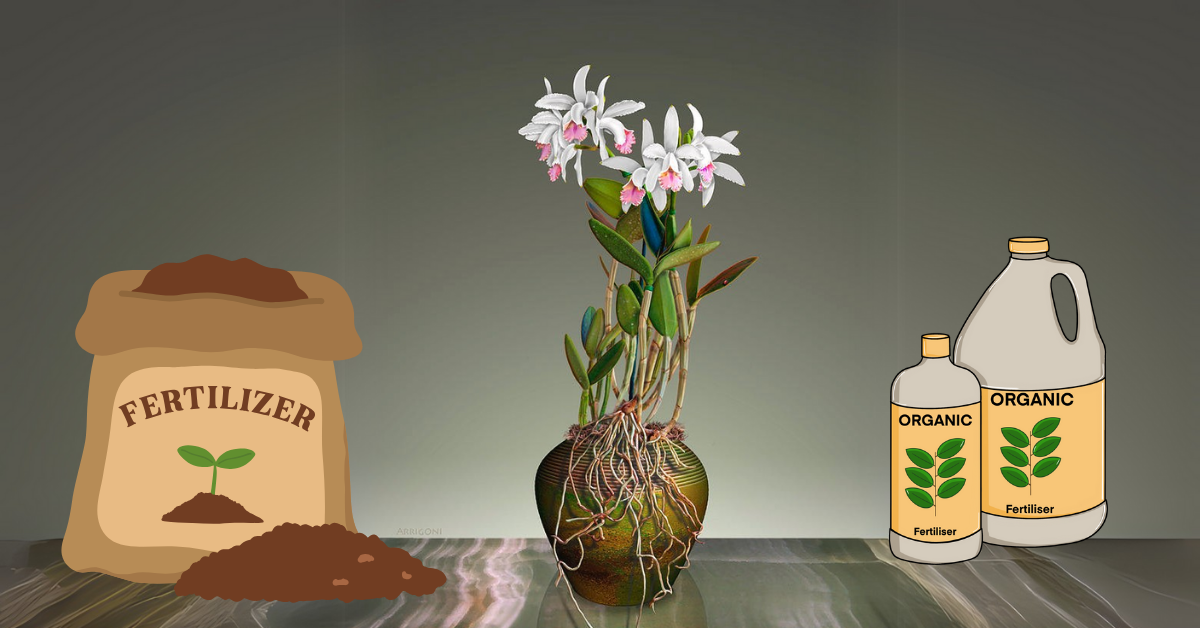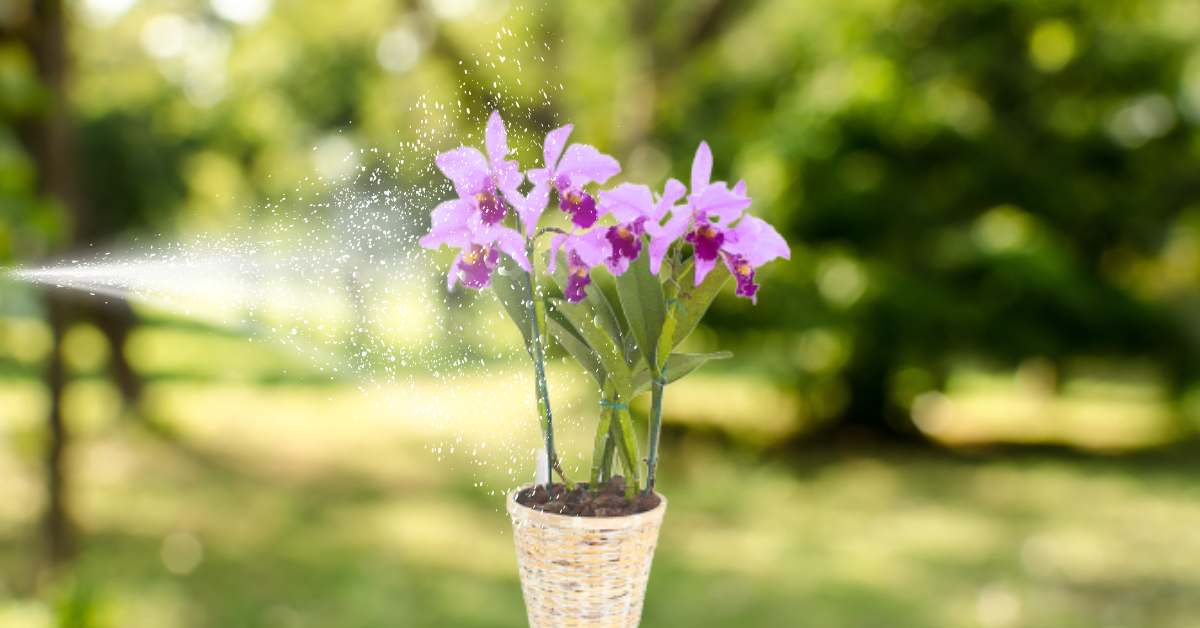Are you captivated by the opulent beauty and intoxicating fragrance of Cattleya orchids? Often dubbed the "queen of orchids," Cattleyas are renowned for their large, flamboyant flowers that come in a stunning array of colors and patterns. Their iconic appearance has made them a favorite among orchid enthusiasts for generations. However, like any prized possession, these magnificent blooms require specific care to thrive and reward you with their breathtaking displays.
If you've ever dreamt of cultivating these floral jewels in your own home, you've come to the right place. This comprehensive guide will delve deep into the art and science of Cattleya orchid care, providing you with all the essential knowledge and practical tips to ensure your orchids flourish and bloom profusely. Whether you're a seasoned orchid aficionado or a curious beginner, this blog post will equip you with the confidence and expertise to successfully nurture your Cattleya orchids.

Why are Cattleya Orchids So Popular?
Before we dive into the specifics of their care, let's take a moment to appreciate why Cattleya orchids hold such a special place in the world of horticulture:
- Striking Beauty: Their large, often ruffled flowers are undeniably captivating, with intricate color combinations and captivating forms.
- Fragrance: Many Cattleya species and hybrids boast a delightful, often strong, and sweet fragrance that can fill an entire room.
- Variety: The genus Cattleya encompasses a wide range of species and countless hybrids, offering an incredible diversity in flower size, shape, color, and blooming season.
- Symbolism: Cattleyas are often associated with love, beauty, and sophistication, making them a popular choice for gifts and special occasions.
- Relatively Easy to Grow (Once You Know How): While they have specific needs, understanding and meeting those needs can lead to consistent blooming and healthy growth.
Understanding the Basics: The Natural Habitat of Cattleya Orchids
To effectively care for your Cattleya orchid, it's crucial to understand its natural environment. Native to tropical and subtropical regions of Central and South America, Cattleyas are epiphytic orchids. This means they naturally grow on the branches of trees, using their roots to anchor themselves and absorbing moisture and nutrients from the air and rainwater. This epiphytic nature dictates several key aspects of their care, particularly regarding potting, watering, and air circulation.
Essential Elements for Thriving Cattleya Orchids: Your Step-by-Step Care Guide
Now, let's get down to the nitty-gritty of Cattleya orchid care. Based on expert knowledge and referencing the key points highlighted in the provided image, here's a detailed breakdown of the essential elements:
1. Potting: Providing the Right Foundation

- Drainage: Cattleya roots need excellent drainage to prevent root rot, a common killer of orchids. Slotted pots allow excess water to escape quickly.
- Aeration: The slots also promote air circulation around the roots, which is vital for their health and prevents stagnation.
- Root Confinement: Using a pot that is only slightly larger than the root ball prevents the potting media from staying wet for too long, which can lead to root problems.
Key Potting Practices:
- Pot Size: Choose a pot that comfortably accommodates the roots without leaving excessive space. Repotting should only be done when the orchid has outgrown its current pot, typically every 1-2 years.
- Pot Material: While plastic pots are common, terracotta pots can also be used as they allow for even better aeration and drainage.
- Repotting Time: The best time to repot a Cattleya is after it has finished blooming and new growth is emerging.
- Repotting Technique: Gently remove the orchid from its old pot, being careful not to damage the roots. Trim away any dead or mushy roots. Place the orchid in the new pot and fill the spaces around the roots with fresh potting media.
2. Media: Choosing the Right Growing Substrate

Understanding Potting Media:
- Purpose: Orchid potting media primarily serves to anchor the plant and provide some moisture and nutrients, but it should not retain excessive water.
- Open Structure: The ideal media for Cattleyas is coarse and allows for plenty of air movement around the roots.
- Common Options:
- Pine Bark: A popular choice, providing good drainage and aeration. Choose medium to coarse-grade bark.
- Coco Chips: Made from coconut husks, they retain moisture slightly longer than bark but still offer good aeration.
- Charcoal: Helps to improve drainage and aeration and can also absorb impurities.
- Brick Bats (Crushed): Provide excellent drainage and aeration.
- Perlite and Lava Rock: Can be added to other media to further improve drainage.
Important Considerations for Media:
- Avoid Regular Potting Soil: Standard potting soil retains too much moisture and will suffocate Cattleya roots.
- Media Breakdown: Over time, potting media will break down, losing its structure and drainage capabilities. This is why repotting every 1-2 years is essential.
- pH Level: While not as critical as for some plants, a slightly acidic to neutral pH is generally preferred for Cattleya orchids.
3. Fertilizers: Nourishing for Abundant Blooms

The Importance of Fertilizing:
- Nutrient Requirements: While Cattleyas can absorb some nutrients from the air and rainwater, regular fertilization is necessary to provide them with the elements they need for robust growth and abundant blooms.
- Balanced Formula: An NPK 19-19-19 fertilizer provides equal amounts of nitrogen (for leafy growth), phosphorus (for root and flower development), and potassium (for overall plant health).
Fertilizing Best Practices:
- Dilution: Always dilute your fertilizer according to the instructions on the packaging. Using too much fertilizer can burn the roots. The image's recommendation of half a teaspoon per liter of water is a good starting point.
- Frequency: Fertilizing weekly during the active growing season (typically spring and summer) is generally recommended. You can reduce the frequency to once or twice a month during the dormant season (fall and winter).
- Application Method: The image correctly suggests thoroughly drenching the media with the fertilizer solution. This ensures that the roots receive the necessary nutrients.
- Foliar Feeding: Spraying the plant's leaves with the diluted fertilizer solution (foliar feeding) can also be beneficial, as orchids can absorb nutrients through their leaves. Ensure the leaves are dry before nightfall to prevent fungal issues.
- Water Before Fertilizing: It's always best to water your orchid lightly before applying fertilizer. This helps to prevent root burn.
- Flushing: Every month or two, flush the potting media with plain water to remove any accumulated salts from the fertilizer.
4. Light: Providing the Right Intensity for Flowering

Understanding Light Requirements:
- Importance of Light: Adequate light is crucial for photosynthesis, the process by which plants convert light energy into food. Insufficient light is a common reason why Cattleya orchids fail to bloom.
- Bright, Indirect Light: In their natural habitat, Cattleyas receive dappled sunlight filtered through the canopy of trees. Direct midday sun can scorch their leaves.
- Ideal Exposure: An east-facing window is often ideal, providing gentle morning sunlight. A west-facing window can also work, but be cautious of intense afternoon sun, especially during the summer months. A south-facing window can provide too much direct light unless the orchid is shielded by a sheer curtain.
- Signs of Incorrect Light Levels:
- Too Little Light: Dark green leaves, long and leggy growth, and failure to bloom.
- Too Much Light: Yellow or reddish leaves, sunburned spots on the leaves.
- Just Right: Medium green leaves and regular blooming.
Tips for Providing Optimal Light:
- Observe Your Orchid: Pay attention to the color of the leaves. They should be a healthy medium green.
- Artificial Light: If you don't have access to sufficient natural light, you can supplement with artificial grow lights.
- Seasonal Adjustments: Light intensity and duration vary throughout the year. You may need to adjust your orchid's position accordingly.
5. Water: Maintaining the Right Moisture Balance

The Delicate Balance of Watering:
- Avoid Overwatering: Overwatering is one of the most common mistakes in orchid care and can lead to root rot. Cattleya roots need to breathe.
- Allow Drying: The potting media should be allowed to dry out slightly between waterings. The top inch of the media feeling dry is a good indicator that it's time to water.
- Watering Frequency: The frequency of watering will depend on various factors, including the type of potting media, the size of the pot, the temperature, and the humidity levels. You may need to water more frequently during warm, dry periods and less frequently during cooler, more humid times.
- Watering Time: Water your orchid in the morning so that the leaves have time to dry out before nightfall, reducing the risk of fungal diseases.
Watering Techniques:
- Thorough Watering: When you do water, water thoroughly so that the water runs out of the drainage holes at the bottom of the pot. This ensures that all the roots are moistened.
- Water Quality: Ideally, use rainwater, distilled water, or reverse osmosis water. Tap water can contain salts and minerals that can build up in the potting media over time and harm the roots. If you use tap water, let it sit out for 24 hours to allow chlorine to evaporate.
- Avoid Getting Water in the Crown: Try to avoid getting water in the crown (the area where the leaves emerge) of the orchid, as this can lead to rot. If water does get in the crown, gently blot it dry with a paper towel.
6. Humidity: Creating a Moist Environment

The Importance of Humidity:
- Natural Habitat: In their natural tropical environment, Cattleya orchids experience high humidity levels.
- Benefits of Humidity: Adequate humidity helps to prevent the leaves from drying out, supports healthy growth, and encourages blooming.
- Ideal Humidity Range: Aim for a humidity level between 50% and 70%.
Ways to Increase Humidity:
- Misting: As suggested in the image, misting the plant daily with water can help to increase the humidity around it. Use lukewarm water and mist early in the day.
- Humidity Tray: Place the orchid pot on a tray filled with pebbles and water. Make sure the bottom of the pot is above the water level to prevent the roots from sitting in water. As the water evaporates, it will increase the humidity around the plant.
- Humidifier: If the air in your home is particularly dry, you can use a humidifier to increase the overall humidity level.
- Grouping Plants: Grouping orchids together can create a microclimate with higher humidity.

Beyond the Basics: Additional Tips for Cattleya Orchid Care
While the image covers the fundamental aspects of Cattleya care, here are some additional tips to ensure your orchids thrive:
- Temperature: Cattleya orchids generally prefer daytime temperatures between 70-85°F (21-29°C) and nighttime temperatures between 60-65°F (15-18°C). A slight drop in nighttime temperature can actually help to initiate blooming.
- Air Circulation: Good air circulation is essential to prevent fungal diseases. Ensure your orchid is placed in a location with gentle airflow, but avoid drafts.
- Pest and Disease Control: Regularly inspect your orchid for any signs of pests or diseases. Common pests include scale, mealybugs, and spider mites. Treat any infestations promptly with an appropriate insecticide. Fungal and bacterial diseases can also occur, often due to overwatering or poor air circulation. Use a suitable fungicide or bactericide if necessary.
- Encouraging Blooming: Providing the right light, temperature fluctuations, and a slight dry period after the new growth has matured can help to encourage blooming. Some Cattleya species and hybrids are seasonal bloomers, while others may bloom more than once a year.
- Observation is Key: The best way to understand your Cattleya orchid's needs is to observe it closely. Pay attention to the color and texture of the leaves, the growth of the roots, and any signs of stress or illness.

Troubleshooting Common Cattleya Orchid Problems
Even with the best care, you may occasionally encounter problems with your Cattleya orchid. Here are some common issues and their potential solutions:
- No Blooms: This is often due to insufficient light. Try moving your orchid to a brighter location. Other factors can include improper temperature fluctuations or lack of a dry rest period.
- Yellowing Leaves: Can be caused by overwatering, underwatering, too much direct sunlight, or a nutrient deficiency. Assess your watering habits and light conditions.
- Root Rot: Caused by overwatering and poor drainage. Repot the orchid in fresh, well-draining media and ensure the pot has adequate drainage holes. Remove any rotted roots.
- Leaf Spots: Can be a sign of fungal or bacterial infection, often caused by excessive moisture on the leaves or poor air circulation. Improve air circulation and avoid getting water on the leaves. Treat with a fungicide or bactericide if necessary.
- Pests: Inspect your orchid regularly for pests and treat any infestations promptly.

Conclusion: The Rewarding Journey of Cattleya Orchid Care
Cattleya orchids, with their exquisite beauty and captivating fragrance, are truly a treasure to behold. While they require specific care to thrive, understanding and meeting their needs can be an incredibly rewarding experience. By providing the right potting, media, light, water, humidity, and nutrients, you can unlock the potential for your Cattleya orchid to produce stunning blooms year after year.
Remember to observe your orchid closely, adapt your care routine as needed, and enjoy the journey of nurturing these magnificent floral queens. With patience and attention, you'll be rewarded with the breathtaking beauty and enchanting fragrance that make Cattleya orchids so beloved by orchid enthusiasts worldwide.
Start your Cattleya orchid care journey today and witness the magic unfold!
Keywords: Cattleya orchids, orchid care, grow Cattleya orchids, Cattleya orchid care guide, orchid potting, orchid media, orchid fertilizer, orchid light, orchid watering, orchid humidity, orchid blooms, orchid care tips, types of Cattleya orchids, buy Cattleya orchids, how to grow orchids, best potting mix for orchids, orchid fertilizer schedule, orchid light requirements, watering orchids, orchid humidity levels, common orchid problems, orchid care for beginners.


